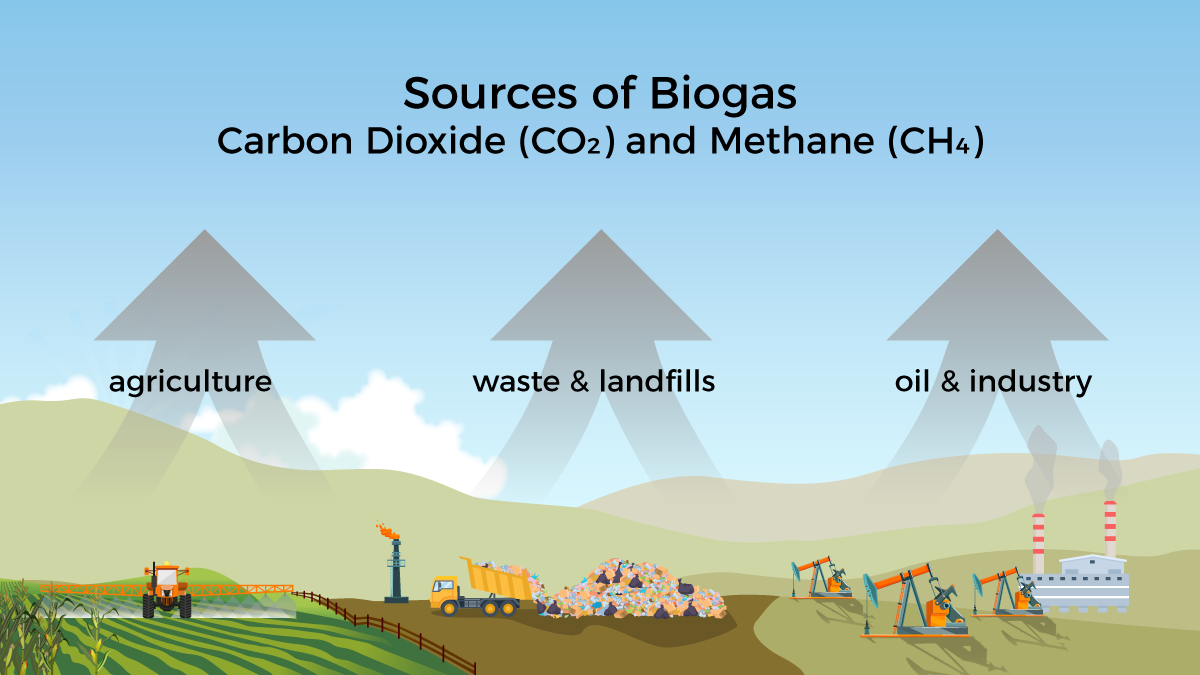Minneapolis Biochar Initiative to Power Urban Carbon Removal
Minneapolis is on the verge of launching one of the first municipally owned carbon removal projects in the United States, centered around the innovative use of biochar. Read more
Minneapolis is on the verge of launching one of the first municipally owned carbon removal projects in the United States, centered around the innovative use of biochar. Read more
Medium- and heavy-duty vehicles (MHDVs) account for only 5% of vehicles on the road in the United States, yet they are responsible for 21% of transportation-related greenhouse gas (GHG) emissions. Reducing MHDV emissions can have a major impact to reduce GHGs and improve air quality. Zero-emission vehicles (ZEVs)—such as battery electric vehicles (EVs) and hydrogen fuel cell vehicles—offer a longer term solution; vehicles that use renewable biogas can lower GHGs significantly right now.
While projecting future technology adoption is complex and many factors influence consumer decisions, economics play a key role in choosing technologies for commercial vehicle applications. A recent study by the National Renewable Energy Laboratory (NREL) explored how the total cost of driving for zero-emission and diesel MHDVs could evolve over time under different scenarios, from the present day to 2050.
“With continued improvements in vehicles and fuels, ZEVs are rapidly becoming commercially viable, potentially reaching total cost of driving parity or better compared to diesel vehicles by 2035 in all market segments,” said NREL’s Catherine Ledna, a decision support analyst who led the study.
Incentives such as the zero-emission MHDV purchase tax credits made possible via the 2022 Inflation Reduction Act (IRA) further accelerate total cost of driving competitiveness and spur emissions reductions up to 70%.
Biogas has a role to play in the transition to zero emissions — biogas systems can fuel EV electricity demand, while also offering additional renewable energy that’s available 24/7 to help stabilize electric grids.
Most biogas systems capture methane — a powerful greenhouse gas with up to 80 times the climate warming potency of carbon dioxide. This means that biogas capture, cleaning, and re-use as an energy resource results in even greater emission reduction on a lifecycle basis than fuels or electricity that only reduce or avoid carbon dioxide emissions, like wind and solar.
Biogas — called renewable natural gas (RNG) or biomethane — can be deployed today to fuel trucks that operate on compressed natural gas.
Reclaiming and using biogas serves an important function in recycling organic waste, reducing the burden on landfills and communities.
Photo: NYC DOT, under CC 2.0 License.

Biogas is a mixture of methane and carbon dioxide produced as organic materials decompose in the absence of oxygen. Typical sources are landfills, water treatment facilities, manure management systems, and source separated organics such as food waste or biomass from agriculture. Biogas can be a renewable source of energy, but can contribute to greenhouse gas emissions when not responsibly managed. Read more
FirmGreen is pleased to announce that it has been recognized by Global Energy as the winner of its Alternative Energy Project Specialist of the Year – West USA.
The entire team at FirmGreen is honored to have this recognition. The company has won numerous international awards for its innovations in the field of renewable energy generation from alternative fuel resources such as landfill gas, digestion of municipal waste streams, and biomass.
“We feel that our dedication to solving local waste handling and clean energy generation for our clients will result in a true win-win proposition.” — Steve Wilburn, FirmGreen, Inc. CEO
Read the full story at: AI Global Media
Learn more about our renewable energy generation
From Newport Beach, California, the U.S. energy company FirmGreen, Inc. (FirmGreen®) is making big waves in green technology as the first international shipment of its proprietary biogas cleaning equipment begins this week, with more shipments to follow. Bound for the Novo Gramacho Landfill near Rio de Janeiro, Brazil, this USA-made equipment and the landfill gas cleanup project will transform a wasteland and support hundreds of jobs for American manufacturers and Brazilian workers over the next two decades. Such equipment exports are welcome news in a U.S. economy facing an ongoing trade deficit and job shortfalls hovering at some seven million, since the start of the 2007 recession.
Interestingly, the Novo Gramacho landfill where this innovative project occurs is depicted in the internationally acclaimed documentary and 2011 Academy Awards nominee, Waste Land. In 2010, FirmGreen negotiated an agreement with Brazil’s Gás Verde, S.A., who is the project developer and the plant’s owner-operator, to turn Waste Land’s “dirty gas,” a natural by-product of trash decomposing, into clean usable gas using FirmGreen technology. The resulting biogas is an environmental-friendly, highly useful fuel with the energy-equivalent of natural gas.
To fabricate the specialized gas cleaning equipment required for the project, FirmGreen contracted with an established company out of Dublin, Ohio: Guild Associates. Guild employees are also helping start-up Gás Verde’s Biogas Plant. FirmGreen’s CEO, Steve Wilburn, commented, “Our world continues to face significant economic challenges, yet this project demonstrates how bi-cultural teamwork can generate hundreds of jobs, in this case throughout six U.S. states—Indiana, Wisconsin, Ohio, California, Michigan, and Texas as well as Brazil. Brazilian contractors are manufacturing some of the Novo Gramacho project components and will take a lead role during plant installation. Together, we are building a sustainable, renewable energy process that is environmentally friendly and good for the citizens of both countries.”
Petrobras, the largest company in Latin America by market capitalization and revenue, will use the biogas from the project to generate over 10% of the thermal energy needed to run its Duque de Caxias Refinery. Petrobras has an impressive record supporting clean energy technologies, and according to the U.S. Government’s EPA LMOP calculator, the Novo Gramacho Biogas Plant will reduce greenhouse gas emissions by 1.4 million metric tons, annually. The Novo Gramacho Biogas Project is slated to begin commercial operations late this year.
Wilburn asserts, “FirmGreen’s business model demonstrates Americans can, and should, take global leadership roles in renewable technologies. We have the skilled labor pool and can-do spirit that makes America great. We can replicate this process in landfills worldwide. We can help rebuild America as an exporter of green technology to the world markets.”
An internationally recognized energy executive and devoted conservationist, Wilburn has had success with similar projects developed in the United States. Most recently, FirmGreen’s Green Energy Center in Ohio won an EPA LMOP Project of the Year Award for converting landfill gas to electricity and CNG for vehicle fuel. Remarkably, FirmGreen has achieved this success without any federal, state, or government subsidies.
Visit the movie website to find out more about the lives of the catadores: http://www.wastelandmovie.com/
LONG BEACH, CA – FirmGreen, Inc. announces that its Green Energy Center (GEC) project developed in partnership with Solid Waste Authority of Central Ohio (SWACO), was recognized by Solid Waste Association of North America (SWANA) with the 2009 Innovation Award. SWANA’s Excellence Awards were held at its annual Wastecon show, held September 22-24 in Long Beach, CA. Read more
FirmGreen, Inc. (FGI) was recognized today at the U.S. Environmental Protection Agency’s (EPA’s) Landfill Methane Outreach Program (LMOP) annual conference with a Project of the Year Award for its Green Energy Center (GEC). Read more
Today, FirmGreen, Inc. (FGI) of Newport Beach, California announced that it signed an agreement with the Solid Waste Authority of Central Ohio (SWACO) to design, build and operate the first phase of its Green Energy Center (GEC) sited near Grove City, Ohio. Read more
FirmGreen, Inc.
2901 West Coast Hwy., Suite 200
Newport Beach, CA 92663
e: info@firmgreen.com
t: +1(949)270-2941
This site uses cookies. By continuing to browse the site, you agree to our use of cookies. Learn more on our Privacy Policy Page.
Got it!CloseWe may request cookies to be set on your device. We use cookies to let us know when you visit our websites, how you interact with us, to enrich your user experience, and to customize your relationship with our website.
Click on the different category headings to find out more. You can also change some of your preferences. Note that blocking some types of cookies may impact your experience on our websites and the services we are able to offer.
These cookies are strictly necessary to provide you with services available through our website and to use some of its features.
Because these cookies are strictly necessary to deliver the website, refusing them will have impact how our site functions. You always can block or delete cookies by changing your browser settings and force blocking all cookies on this website. But this will always prompt you to accept/refuse cookies when revisiting our site.
We fully respect if you want to refuse cookies but to avoid asking you again and again kindly allow us to store a cookie for that. You are free to opt out any time or opt in for other cookies to get a better experience. If you refuse cookies we will remove all set cookies in our domain.
We provide you with a list of stored cookies on your computer in our domain so you can check what we stored. Due to security reasons we are not able to show or modify cookies from other domains. You can check these in your browser security settings.
These cookies collect information that is used either in aggregate form to help us understand how our website is being used or how effective our marketing campaigns are, or to help us customize our website and application for you in order to enhance your experience.
If you do not want that we track your visit to our site you can disable tracking in your browser here:
We also use different external services like Google Webfonts, Google Maps, and external Video providers. Since these providers may collect personal data like your IP address we allow you to block them here. Please be aware that this might heavily reduce the functionality and appearance of our site. Changes will take effect once you reload the page.
Google Webfont Settings:
Google Map Settings:
Google reCaptcha Settings:
Vimeo and Youtube video embeds:
The following cookies are also needed - You can choose if you want to allow them:
You can read about our cookies and privacy settings in detail on our Privacy Policy Page.
Privacy Policy